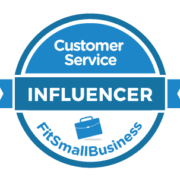How well do you manage customer value?
In the insurance and wider financial services sector, the concept of customer value is growing in profile all the time. This has come about mainly, though not exclusively, as a result of increasing focus on the subject by the industry regulator, the Financial Conduct Authority. So how well are you equipped to understand and then manage customer value in your company?
Customer Value Management is under the microscope in two ways –
- Firstly, products and services themselves.
- Secondly, as a result of the intermediated insurance model, focus is also on value in the distribution chain. Which begs the question – how well do you understand and then manage customer value in your company?
What’s interesting is that whilst some insurance firms have been looking at this for a while, it has taken the intervention of the regulator to drive significant activity in this area.
Of course, the concept of customer value management is far from new, nor does it live only in the insurance world. It’s all around us, as consumers ourselves, and as owners and leaders of businesses.
What IS customer value and how can organisations manage it for their customers?
- What of “value” itself? Well of course it can often be subjective. They say beauty is in the eye of the beholder!
- One definition of value is “the importance, worth, or usefulness of something” and that seems like a good place to start in assessing what value our customers place on what we offer them
- One angle to consider in delivering value is: to what extent do we truly know and understand our customers’ needs and expectations? For only then can we set about meeting or exceeding them, in turn offering value to our customers – but also ensuring we get value from this too!
- Engaging with customers, taking regular and meaningful feedback from them, and researching not what they want but what their hopes, fears, challenges and concerns are, have proven to be highly effective ways of getting to the heart of the matter
Although we don’t like it when things go wrong, problems and complaints are a great source of important learnings for a business (not to mention that they are also fabulous opportunities to actually create customer loyalty, not destroy it)
Following all this up by designing propositions and solutions around customer feedback is critical; some businesses design what they THINK their customers want rather than basing their offer on real life customer input
We’ve seen in the financial services, how firms are reliant on a third party such as a broker, a distributor or intermediary to help deliver the overall customer journey, so we often help the companies we work with to create a clear customer proposition that is aligned to your end customer. This ensures that language used will be understood and resonates with everyone.
A further consideration could be utilisation of your products & services:
- It may seem obvious but low usage rates are a clear indicator that customers do not value what’s available to them as much as we think they do.
- And of course, the correlation between price and value is a strong one – whether we’re consumers or in B2B relationships, I’d argue that very few, if any, of us would be prepared to pay more for something than what we believe it is worth
- Which in turn begs the questions: Do your customers truly understand what they get from you? And how effectively do your people sell that to them? If we get this wrong, it’s little wonder customers may undervalue what we offer
- And if your business is part of a distribution chain, what considerations might there be?
- The nature of the relationships in the chain will become increasingly important in the future. We can probably all think of relationships where one party has power over another in the chain, and exercises that at every opportunity. In the end that may well result in lower prices, but it doesn’t feel like a sustainable model. Relationships focused on mutual customer value creation are far more likely to stand the test of time.
- Extending this further, sharing knowledge and information on products, services, and customer trends and behaviour, will undoubtedly benefit all parties in the chain as well as the customer themselves
- And taking another step further, true collaboration – partnerships, joint ventures, and the like – present wonderful opportunities to bring together different skillsets and expertise; share risks and create joint opportunities; and capitalise on a deeper stronger set of relationships to create outstanding customer solutions.
You might well argue none of this is earth shattering or ground-breaking. That’s not really the point. I started by saying that the growing profile of customer value in insurance and financial services has been prompted more by the regulator than is perhaps necessary. My point is, if enough organisations had been focused on this to start with, intervention wouldn’t have been necessary.
Which leads me to wonder, no matter what industry your organisation operates in, are you giving enough focus to customer value management?
![]() Please get in touch if you would like to discuss customer value management for your company.
Please get in touch if you would like to discuss customer value management for your company.
Learn more about:
- Why Trust is key in Financial Services
- Customer Proposition Development
- Customer Relationship Strategy
- Partnership Relationship Survey
Watch:
David Brown joins the Customer Attuned Panel discussion on The Trust Factor – Making Trust your Business DNA
 How Customer Attuned is your company?
How Customer Attuned is your company?
- Customer Attuned Newsletter explores 3 Ways to Improve B2B Relationships - May 20, 2024
- Season’s Greetings from Customer Attuned - December 7, 2023
- Why is it important to have a Sales & Account Management Framework? - November 14, 2022



